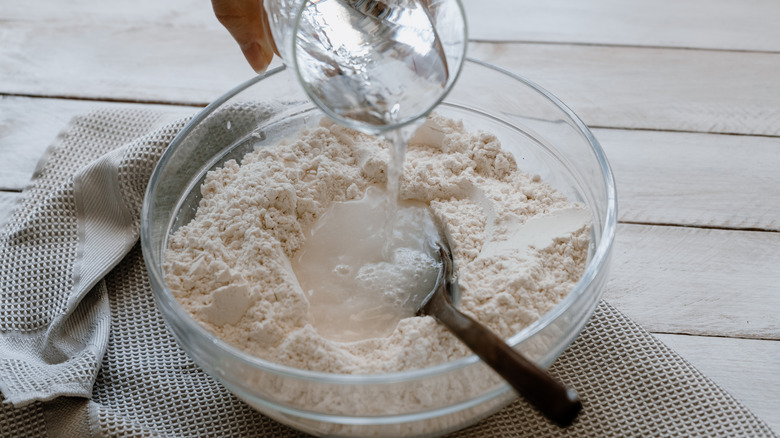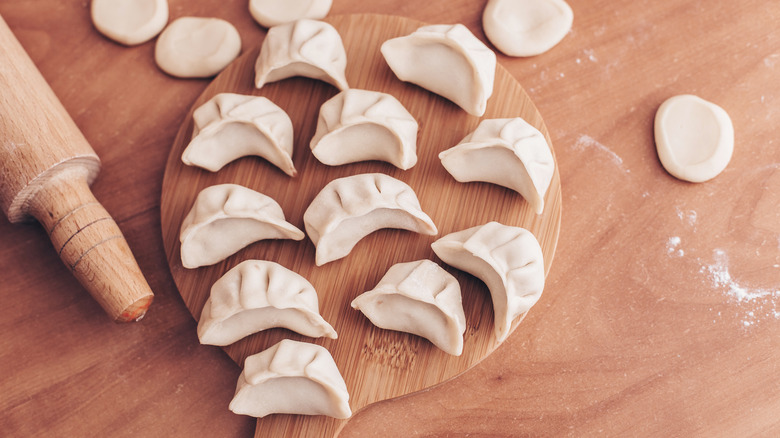Hot Water Dough Vs. Cold Water Dough: What's The Difference?
In the world of the culinary arts, one category demands you have a decent level of understanding of what's happening at a molecular level, arguably making it a more scientific endeavor — baking. There are so many mistakes that will screw up a dough or batter, from using the wrong flour to mixing dry and wet ingredients together.
One thing that might make or break your recipe is using the wrong temperature for water. According to Earth to Veg, there are certain recipes that will benefit from the use of hot water dough or scalded dough. This means that boiling water is incorporated with the flour when forming the dough. Severn Bites adds that sometimes this process is only used on a portion of the dough to get the benefits of both warm and cold water doughs.
By knowing the benefit each dough offers, you will broaden your understanding of baking and demystify the tricky nature of dough.
Soft vs. Strong
One of the most common things made using hot water dough in Chinese cooking is dumplings. Earth to Veg points out that using hot water in recipes for steamed or fried dumplings will produce a softer, more delicate final texture in the dumplings' wrapper. This is because boiling water breaks down the gluten in the flour and gelatinizes many of the starches.
Serious Eats says that gluten is a protein that gives bread and dough their structure and adds to their chewiness. Earth to Veg adds that breaking down these proteins prevents them from forming much of a structure and results in a softer, less stretchy dough. The gel-like starches that are created contribute to this texture and make hot water doughs well suited to other flatbreads like tortillas, piadina, and matzo.
Cook's Illustrated says to make cold water doughs for bread and pizza recipes because they benefit from long, slow, yeasted rises. The cold water maintains the gluten structure that traps gasses produced by the yeast and adds flavor to the bread. Severn Bites, however, does recommend using hot water when using flours low in gluten, like rye or buckwheat. Since these flours are already low in gluten, scalding the flour gives you the benefits of the gelatinized starches without compromising the structure of these doughs. Only a portion of the dough should be scalded to maintain the rest of the structure. Now get out there and knead!

